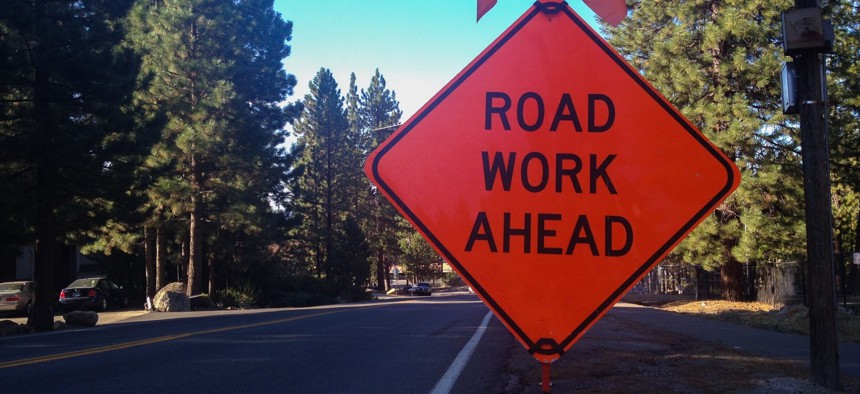Getting Unsolicited Infrastructure Bids? Here’s What to Look Out For

GettytImages/Anders Clark/EyeEm
COMMENTARY | With $1.2 trillion in infrastructure money flowing from Washington, D.C., state and local governments should evaluate their processes for selecting and approving new projects.
With $1.2 trillion in infrastructure money starting to trickle out from Washington, state and local governments would be wise to evaluate their processes for selecting and approving new projects to repair roads, upgrade water systems, expand broadband access and more.
As procurement for these projects gets underway, one aspect of procurement that rarely gets attention—but can cause public officials headaches—are unsolicited proposals from the private sector. It is likely that states and localities will receive an increasing number of such bids, as private investors and infrastructure development firms look to capture the incoming federal funds.
Here are five reasons state and local officials should use the unsolicited proposal process with caution, which are explored in further detail in a policy brief produced in February:
- Project selection might favor profitable projects. Allowing or relying on unsolicited proposals enables private interests to dictate which projects get built first or at all. Private investors are interested in projects that will produce a healthy return on investment, such as toll roads, courthouses or university student housing. They are less interested in projects that don’t have a reliable revenue stream or are unable to generate high enough returns. For example, projects in underserved, low-income geographic areas or those designed to increase climate resiliency may not be profitable.
- The scope of critical projects might change. Unsolicited proposals often allow corporations to determine the scope of the project. For example, a state or local government may want to replace an aging bridge. A private developer may submit an unsolicited bid that bundles other projects, such as public parklands, parking structures, park concessions and/or other projects near the bridge, to make the project more profitable. These “add-on” projects may not be critical, time sensitive or even what the community needs.
- The public-private partnership procurement process might be initiated. Unsolicited proposals may put pressure on the government to initiate a public-private partnership procurement process, even when one was not planned or desired. For example, in 2002 Virginia received an unsolicited proposal from a multinational construction firm to add toll lanes to the state’s portion of the Capital Beltway. Following state policy that requires review of unsolicited bids, the proposal triggered a procurement process that ultimately led to the state signing a public-private partnership with the firm to build and manage the lanes. Virginia officials have since acknowledged that the automatic triggering put the contractor in a “superior position in driving the process.”
- Government capacity might decrease. Allowing for or encouraging unsolicited proposals can create capacity issues with planning and procurement staff, taking them away from critical infrastructure projects. As the Federal Highway Administrationnotes, “Significant staff and/or specialized consultant resources, such as financial advisors, may need to be dedicated to reviewing and processing unsolicited proposals, leaving staff spread thin on regular tasks.”
- There might be a lack of community input. Unsolicited proposals often bypass the community engagement processes and stages that public infrastructure projects typically follow. With dire needs across all kinds of infrastructure—from water pipes to broadband internet—states and localities can’t afford to let corporations and private investors drive where investment should go.
States and localities only have to look at Virginia’s toll lanes for reason to be cautious. The project—which was originally triggered by an unsolicited proposal—is limping along only a decade into an 85-year contract. Traffic volume has been lower than expected, even before the pandemic. Choke points between the lanes and other roads have increased congestion and accident rates. According to a lawsuit that was settled out of court in 2016, the contractor allegedly routinely failed to notify drivers in a timely manner that they were accumulating huge fees and fines for missed tolls. One driver’s $50 in missed tolls snowballed into owing $36,000.
It’s reasonable to assume that if Virginia had followed the traditional procurement process to build the lanes, it might have avoided some of these issues. The state’s department of transportation reported after the unsolicited bid process was completed that it felt like it was “struggling to catch up” with the contractor on “most of the technical issues.”
With 4,000 projects announced and over 65,000 miles of highway and 1,500 bridges slated to be fixed by the end of the year, this is a historic opportunity for states and localities to meet the infrastructure needs of communities. Being cautious with unsolicited bids will help make sure those needs are put first.
Shar Habibi is research and policy director of In the Public Interest, a national nonprofit research and policy organization that studies public goods and services.
NEXT STORY: There’s Growing Urgency for Passenger Rail Projects to Move at High Speed





